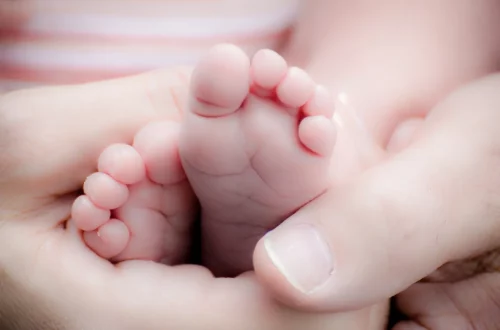
Can You Microwave Paper Cups Safely Without Risking Health?
Microwaving is a quick and convenient way to heat food and beverages, but not all containers are created equal when it comes to safety. One common item found in many households and coffee shops is the paper cup. While they are often considered disposable and convenient, questions arise regarding their safety for use in microwaves. Concerns about chemicals leaching into food and the potential for fire hazards can make consumers hesitant. It’s essential to understand the materials that make up these cups, their intended use, and the potential risks involved when using them in a microwave.
Paper cups are typically coated with a thin layer of plastic, usually polyethylene, to prevent leaks and enhance durability. This coating raises questions about whether it can withstand microwave heat without releasing harmful substances. Additionally, the structural integrity of paper itself and the potential for overheating are factors that need consideration. It’s important for consumers to be informed about the best practices for using paper cups in the microwave, including the types of beverages that are safe to heat and the duration of heating to avoid accidents.
Understanding these aspects can help individuals make safer choices when it comes to using paper cups in the microwave, ensuring that convenience does not come at the cost of health.
Understanding Paper Cup Composition
To determine whether it’s safe to microwave paper cups, it’s crucial to understand their composition. Most paper cups are made from a combination of paperboard and a polyethylene film lining. The paperboard provides the structural integrity needed to hold liquids, while the polyethylene lining prevents leaks and ensures that the cup can contain hot beverages without breaking down.
The polyethylene layer is a significant point of concern when microwaving these cups. While it is generally considered safe for food contact, heating it to high temperatures may cause it to break down, potentially leaching chemicals into the beverage. However, the actual risk depends on several factors, including the temperature reached and the duration of heating.
Another aspect to consider is the quality of the paper cup. Not all paper cups are created equal; some may be treated with additional chemicals or coatings that could pose risks when heated. It’s advisable to look for cups labeled as microwave-safe, as manufacturers have tested these products for safety under typical microwave conditions.
In summary, the composition of paper cups plays a vital role in their safety for microwave use. Understanding the materials involved can help consumers make informed choices about whether to use these cups for heating beverages in the microwave.
Safety Concerns When Microwaving
When it comes to using paper cups in the microwave, several safety concerns should be taken into account. One of the primary risks is overheating. Paper, while an excellent insulator, can catch fire if exposed to high enough temperatures for too long. Microwaves can heat unevenly, leading to hot spots where the temperature may rise significantly, creating a fire hazard.
Another concern is the potential for leaching harmful chemicals. As mentioned earlier, the polyethylene lining can break down when exposed to high temperatures, and although it is generally deemed safe, some studies suggest that it may release small amounts of chemicals that could be harmful when ingested in significant quantities. This is particularly concerning when paper cups are used for prolonged heating, such as reheating food or beverages multiple times.
Additionally, the contents of the cup can also impact safety. Beverages with high sugar content can reach higher temperatures more quickly, increasing the risk of overheating and burning. It’s essential to monitor the heating process closely, using short intervals and stirring the contents between heating sessions to promote even heating.
Lastly, it’s worth noting that not all paper cups are created for the same purpose. Some are designed strictly for cold beverages, while others are made for hot drinks. Using the wrong type of cup can lead to structural failure, resulting in spills and burns.
In conclusion, while paper cups can be microwaved safely under the right conditions, it is vital to be aware of the risks involved. Proper precautions—such as choosing the right type of cup, avoiding overheating, and monitoring the heating process—can help minimize these risks.
Best Practices for Microwaving Paper Cups
To safely microwave paper cups, following best practices is crucial. First and foremost, check for any labels indicating that the cup is microwave-safe. Manufacturers often test their products for microwave use, and using these designated cups can significantly reduce the risk of chemical leaching and structural failure.
When microwaving, it is advisable to use low to medium power settings. This approach helps avoid hotspots that can cause the cup to overheat or catch fire. If you’re reheating beverages, do so in short intervals, typically 30 to 60 seconds, and stir the contents in between. This action will help distribute the heat evenly, preventing hot spots that could compromise the cup’s integrity.
Another important practice is to avoid sealing the cup. If a paper cup has a lid, it’s best to leave it slightly ajar or remove it entirely while microwaving. This allows steam to escape, reducing the pressure inside the cup and lowering the risk of spills or explosions.
It’s also important to monitor the heating process closely. If you notice any signs of smoke, unusual odors, or if the cup becomes too hot to handle, stop the microwave immediately.
Lastly, consider the type of beverage being heated. Drinks that are high in sugar or fats can heat up more quickly than water or other less dense liquids. Familiarize yourself with the specific properties of what you are heating to ensure safe microwaving.
In summary, by adhering to these best practices—such as choosing microwave-safe cups, using appropriate heating settings, and monitoring the process—you can significantly reduce the risks associated with microwaving paper cups, making it a safer option for enjoying your favorite beverages.
Alternatives to Paper Cups
While paper cups offer convenience, there are numerous alternatives available that can be safer and more sustainable for use in the microwave. Glass and ceramic containers are two excellent choices, as they are generally microwave-safe and do not contain any harmful chemicals that could leach into food or beverages.
Glass containers, particularly those labeled as microwave-safe, are designed to withstand high temperatures without breaking down. They allow for even heating and do not pose the same risks associated with paper cups. Additionally, glass does not absorb odors or flavors, making it an excellent choice for reheating a variety of foods and drinks.
Ceramic is another great option. Like glass, ceramic containers tend to be microwave-safe and can handle high temperatures. However, it’s essential to ensure that the ceramic is free of metallic paints or glazes, as these can cause sparking or damage in the microwave.
Stainless steel containers are also a safe alternative; however, they should never be used in the microwave. Instead, consider using stainless steel for food storage and transfer, then transferring the contents to a microwave-safe container for heating.
For those looking for eco-friendly and reusable options, silicone containers are another alternative. They are flexible, lightweight, and designed to withstand high temperatures. Silicone products often come in various shapes and sizes, making them versatile for different food items.
In conclusion, while paper cups are convenient for single-use scenarios, there are many safer and more environmentally friendly alternatives available for microwaving. By exploring these options, consumers can enjoy the benefits of convenience without compromising their health or safety.
**Disclaimer:** This article is for informational purposes only and should not be considered medical advice. Always consult with a healthcare professional for any health-related concerns.




